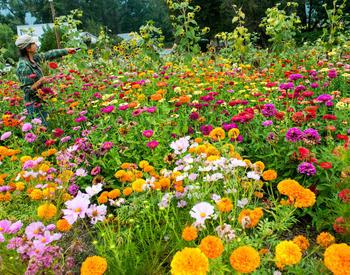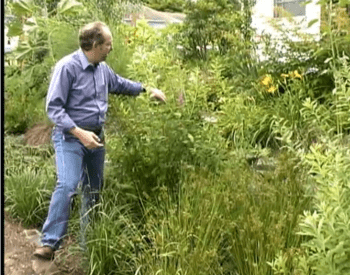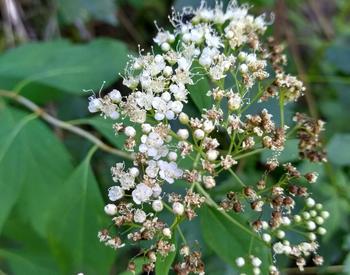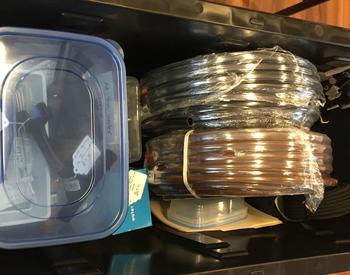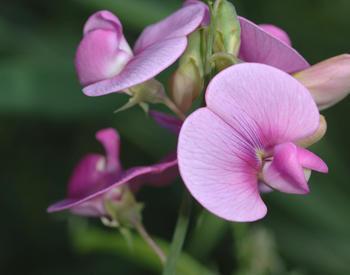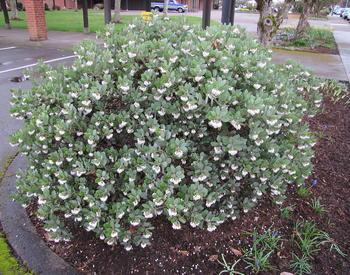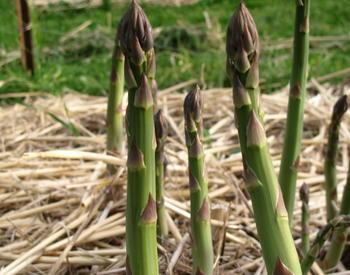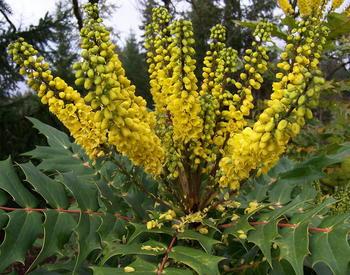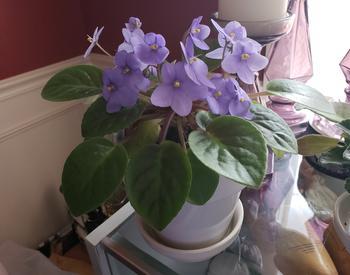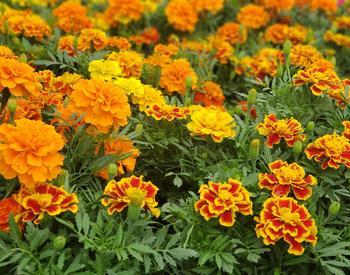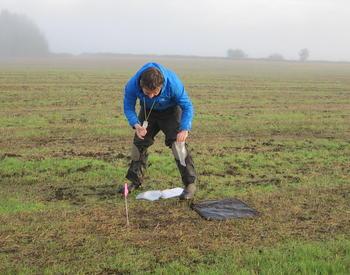Houseplants are easy to grow and come in an increasingly wide range of colors, leaf shapes and “habits,” making them an enjoyable addition to many homes. In winter months, houseplants may be the only gardening outlet available.
Intensity and duration of available light diminish significantly in the winter months: it may be necessary to move plants, add lighting, or open shades and blinds to ensure that indoor plants get adequate light. Even indoor plants slow down their development during the winter, so it is possible to “over-love” them by delivering too much water or fertilizer during the winter.
Making a few adjustments to routine care can help houseplants look their winter best — most important is careful observation of the plants to see how they are responding, mindful that there is sometimes a delay between an event that affects a plant and evidence of that event. Cold damage, for instance, might show up immediately in a very tender plant, or not for several days — when it might be harder to connect black spots on leaves to kids leaving a door or window open.
The most common houseplant issues are usually easy to identify and fix.
Overwatering
By far the most common cause of houseplant demise. Most plants perform best when soil mostly dries out between waterings: few houseplants benefit from constantly moist soil. Often, recommendations tell the novice to “water until water comes out of the bottom of the pot.” Good advice, intended to ensure that entire root ball of the plant receives moisture.
However, sometimes instructions don’t go far enough — it’s not a good idea to leave that water in the saucer to saturate the soil. Waterlogged soil can keep plant roots from getting the oxygen usually present between soil particles. The fleshier and more succulent a plant’s leaves, the more likely it will suffer from “wet feet.” Water until the pot drains, then remove the excess!
Sour soil
Sour soil can be a byproduct of waterlogged soil, arising from the interactions of bacteria, water and decaying plant matter.
Sometimes, all the minerals in a potting soil will leach out — clay pots are notorious for the telltale white ring of a salt deposit on the rim. Leaching can be a sign of too much fertilizer, but this is not always true. For most houseplants, reduced fertilizer in winter is a good practice.
Soil issues can often be solved by replacing the soil or repotting, and are not to be confused with the use of the term “sour soil” to define acidic soils. Acidic soils have a pH lower than 7.0 — preferred by begonias and African violets.
Fungus gnats
If tiny black flies arise from a houseplant after watering, the culprit is most likely fungus gnats. We see the adults flying around the base of the plant when disturbed. The larvae are in the soil, eating tiny bits of decaying organic matter — shed plant cells, decaying pieces of root, bits of compost.
Fungus gnat larvae need high moisture levels to survive. Letting soil dry out between waterings is the best way to deal with these annoying gnats. Remember, plants need less water in the winter — cutting back from the usual amount may be helpful.
Cold damage
While putting plants in the window to maximize sunlight is helpful, many plants will be sensitive to the colder air and drafts around a window, especially an older one that may not seal well. African violets, jade plant, begonia and others will all show damage if leaves are right up against a window on a cold night.
A plant too near the front door, where cold drafts happen every time the door opens, might also experience problems. Ficus plants will drop leaves under these conditions. Cold damage is often separated in time from the cold event.
Insects
There are few insects that plague our house plants, but they can be difficult to recognize. Aphids, whitefly, scale, mealybugs and thrips are the insects most likely to be encountered on our house plants. Whitefly, scale and mealybug insects spend a significant portion of their lives sitting still in one place on the plant, even blending in with plant. Careful observation is helpful — some scales look like little brown bumps on the leaves, not resembling an insect at all. Aphids come in every shade of green and often hide on the undersides of leaves.
Soapy water spray will take care of many of these, but will probably have to be applied more than once. Quarantine infested plants while they are under treatment so the insects don’t spread to another plant. Avoid plants with sticky residue on leaves when purchasing: this “honeydew” is a sign of aphid and whitefly problems.
¡Use los pesticidas con seguridad!
- Póngase ropa de protección y equipo de seguridad según las recomendaciones de la etiqueta. Báñese después de cada uso.
- Lea la etiqueta del pesticida—aunque lo haya usado antes. Siga al pie de la letra las indicaciones de la etiqueta (y cualquiera otra indicación que Ud. tenga).
- Tenga precaución al aplicar los pesticidas. Conozca su responsabilidad legal como aplicador de pesticidas. Usted puede ser responsable de heridas o daños resultantes del uso de un pesticida.
